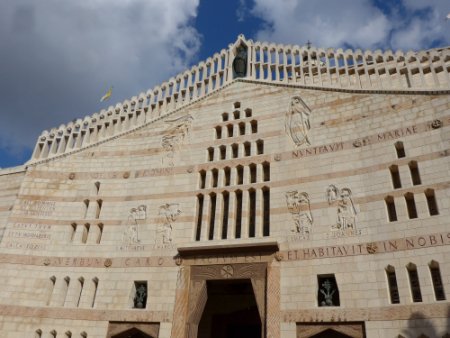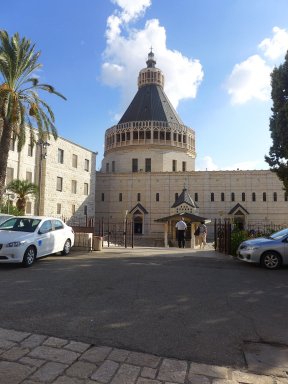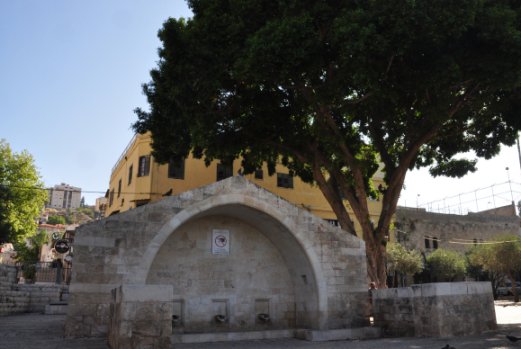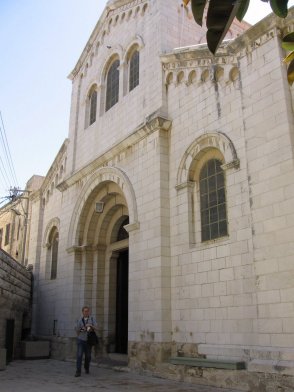|
October 2015: The Holy Land |
|||
|
An exhausting but highly thought-provoking eight days that
provided a geographical context for the Biblical narrative. Not all the
sites we visited had Biblical connections: three places that were
impressive in very different ways were the Dead Sea (rapidly shrinking
these days) the palace and fort at Masada, and the Holocaust Museum in
Jerusalem. I'll describe (and comment on) the places we saw in the order they appear in the New Testament, starting with Nazareth, claimed as the site of the Annunciation to Mary and the childhood of Christ. As you can see, it is now a bustling, modern city, complete with its own Macdonald's. |
|||
|
|
|
||
| Nazareth is an Arab city within Israel, with a population that is around 70% Muslim, 30% Christian. The main attraction is the church of the Annunciation, which is a building that raises issues encountered in many of the Holy Land locations. Before addressing them, let's have a look at that church. | |||
|
|

|
||
|
|
|
||
| A modern church, then, built in 1969 on the site where traditionally the Annunciation to the Virgin took place. The enclosed columns and stonework mark the location of the grotto said to the be House of Mary. In the upper level of the church is a gallery of mosaics from around the world - for me, this was a particularly resonant one. It comes from the Shrine at Walsingham in Norfolk, which has its own replica of the house of Mary. | |||
|
|
|||
|
So what are the issues? The location of the
various shrines is problematic. Descriptions frequently resort to phrases
such as 'by tradition', because, of course, there is no convincing
archaeological evidence that the events described in the Bible actually
happened there. It can be argued that the function of these places
is to commemorate the events, and the precise location doesn't matter.
This would be fine if it wasn't for the fact that the various religious
groups - and indeed, archaeologists - continue to argue. The other issue for me is the buildings themselves. Most of those marking the sacred spots are modern, many from the twentieth century. Not all are to my taste. The interior of this church is raw concrete - the idea was to keep it plain and simple, but I am not a fan of concrete. Other locations in Nazareth. In one tradition, Mary's first encounter with Gabriel took place at a well; by tradition - that phrase again - this one, which is actually some distance from the Church of the Annunciation. |
|||
|
|
|||
|
A short way up the hill from the Church of the Annunciation is this church, dedicated to St Joseph, which is said to mark the place where he lived and had his workshop. It dates from 1914. |
|||
|
|
|
||
|
|
|||
|
|
|||





